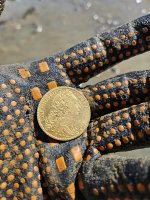Photo of new White's Pulsescan
I guess it will be out shortly.
http://www.mytreasurespot.com/forums/read.php?5,243590,243590#msg-243590
George
I guess it will be out shortly.
http://www.mytreasurespot.com/forums/read.php?5,243590,243590#msg-243590
George
Amazon Forum Fav 👍
Upvote
0




